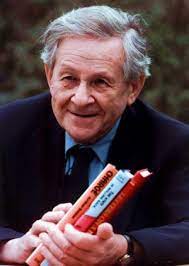Liberty Matters
Five Kinds of Think Tanks

The more I think about Arthur and his role and consider the responses of John, Nigel, and Pete, the more I am seized by the realization that there was something unique about the combination of the time and place (British political and media culture in the period from the early 1960s through the later 1980s) and the personal qualities and interests of Arthur Seldon that led to something appearing that hadn’t existed before and has proved hard to replicate. Not impossible, however, as I would argue that the model of intellectual inquiry and advocacy that he created is not so connected to specifics of personality and contingent environment that it cannot be reproduced once its main features (which Pete describes well) are known and identified. There are indeed other think tanks like the IEA in terms of the kind of work they produce – I would point to the Brookings Institution as one prominent case.
John makes some rejoinders to me and Pete. Some of these are well taken, but on the whole I’m not persuaded. He is quite right that there are many good authors located outside conventional academia, and indeed many of the works produced by the IEA under Philip Booth’s direction fall into this category. Interestingly some of them are by authors you might call refugees from academia, and I think the point about this is that it tells us something about the state of the academy and the decline of work of wider relevance and interest within it as compared to 20 years ago. As for the media, the strategy John describes is indeed what the IEA has done, with considerable success, but there are two persistent challenges. The first is to avoid being sucked into the contemporary media’s own agenda and letting your work be driven by the whirligig of media fads. The second is the difficulty of putting over the kind of deeper, more basic questions that Pete mentions when the media tend to focus obsessively on the immediate present.
Related Links:
Like Pete, I don’t find the arguments about the peculiar nature of London convincing. I think the point about the focus of donor interests is spot on – the challenge is to find donors such as Fisher or the Liberty Fund’s own Mr. Goodrich, who have a longer term focus. I would add that I think we are seeing a reshuffling of think tanks at present, which may provide hope. There are basically five types of think tank:
- networking clubs for policy makers such as Council on Foreign Relations,
- scholarly ones like the IEA,
- policy production shops like Heritage or the Adam Smith Institute,
- media-oriented or campaigning organizations such as the Center for American Progress, and
- educational ones.
The third kind are currently the predominant type, but the model has stopped working. As a result wonk shops of the kind Pete describes are changing into one of the other types. In the UK the ASI is moving towards the last type (of which FEE is the premier example), Heritage has clearly become one of the fourth type, while the American Enterprise Institute is moving towards the second model. Cato is poised between becoming a type-four or a type-two institution.
The hope is that we will end up with at least a few clearly identifiable Arthur Seldon-type institutions. What we really need is a pluralism of think tanks but with the distinctions of type and method very clear – what I do not think is possible is to combine the different types in one organization, no matter how large it may be.
Copyright and Fair Use Statement
“Liberty Matters” is the copyright of Liberty Fund, Inc. This material is put on line to further the educational goals of Liberty Fund, Inc. These essays and responses may be quoted and otherwise used under “fair use” provisions for educational and academic purposes. To reprint these essays in course booklets requires the prior permission of Liberty Fund, Inc. Please contact oll@libertyfund.org if you have any questions.